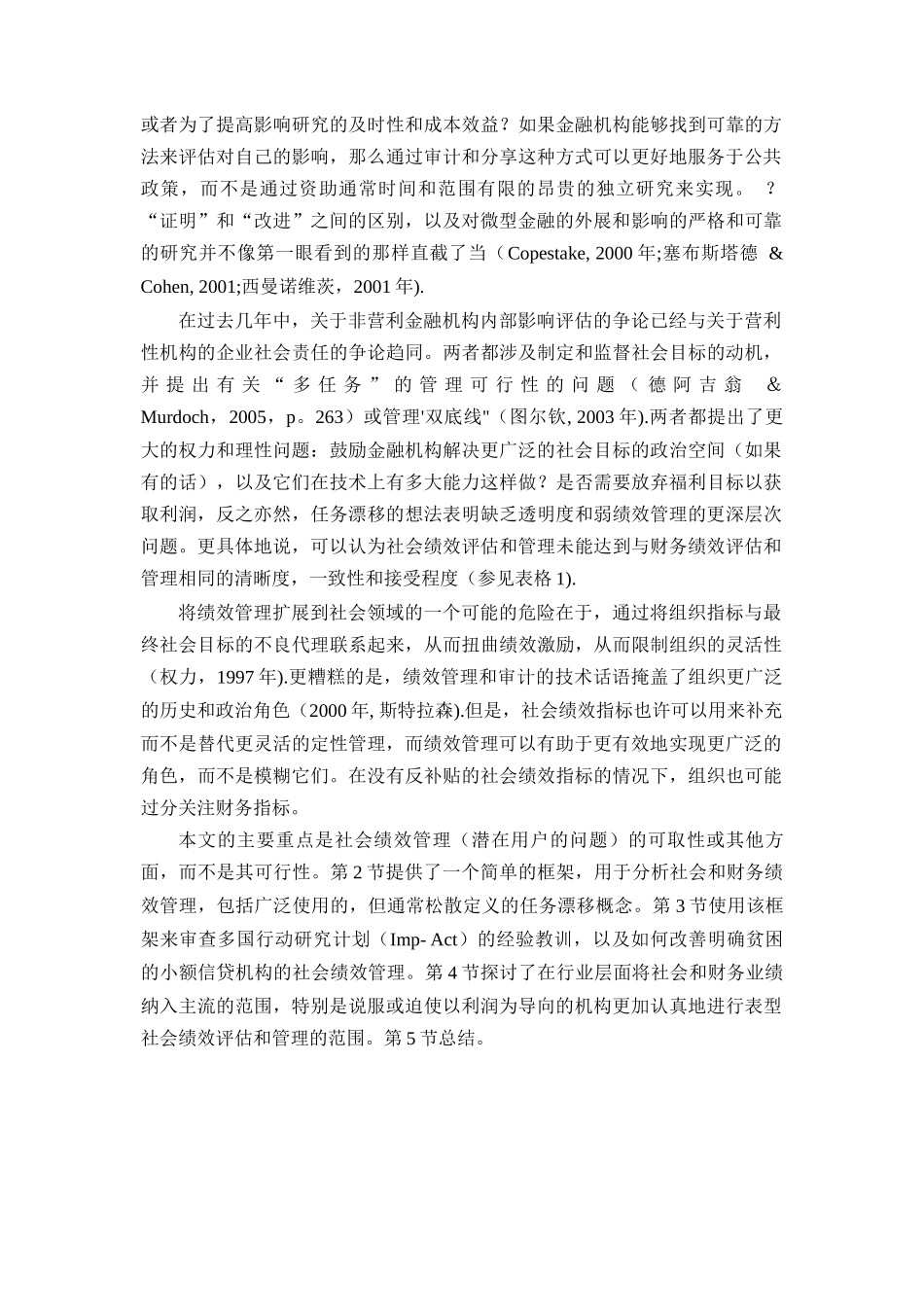将小额信贷主流化:社会绩效管理还是任务转移?摘要在专业小额信贷和商业银行部门日益一体化的背景下,追求明确的发展目标有多大的范围?首先使用区分机构财务和社会绩效可能性,偏好和评估系统的模型来分析这个问题和任务漂移的概念。该模型用于审查行动研究的结果,并以贫困为导向的小额信贷机构的国际样本,提出了改善社会绩效管理的一些简单步骤。然后,它用于更广泛地说明零售金融服务部门的社会和财务业绩之间的关系,并提供更多政策分析的指示。关键词:银行业,小额信贷,绩效管理,贫困AbstractWhat scope is there for the pursuit of explicit development goals in the context of increasing integration of specialized microfinance and commercial banking sectors? This question and the idea of mission drift is first analyzed using a model that distinguishes between institutions’ financial and social performance possibilities, preferences, and assessment systems. The model is used to review findings from action research with an international sample of poverty oriented microfinance institutions that suggest some simple steps for improved social performance manage- ment. It is then used to illustrate the relationship between social and financial performance more widely across the retail financial services sector, and to offer pointers for more policy analysis at this level.Key words : banking, microfinance, performance management, poverty1 简介大量的公共和私人资金继续用于改善个人金融服务的获取和质量。这项投资大部分是以利润为导向的,但许多投资者也受到社会目标的驱动。例如,协助最贫困的协商小组(支持小额信贷的国际捐助者的最高协会)将小额信贷视为“一种有助于消除贫困的有力工具”,可以帮助穷人“增加收入,建立他们的资产,并抵御外部冲击''(克尺度, 2004a, p. 1).小额信贷在这里与用户有关 - 而不是与其他形式的金融相关 - 定义为向相对贫困的人提供储蓄,信贷,保险和支付服务。这些服务不仅由属于微型企业融资“新世界”的专业小额信贷机构(MFIs)提供(Otero & Rhyne, 1996)还有一群不同的国家赞助和...


